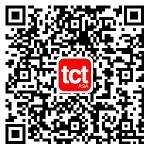Museums worldwide are embracing innovative technologies to revolutionize access to their extensive artifact collections. Among these advancements, 3D scanning and printing have emerged as powerfully useful tools, offering unprecedented opportunities for researchers, educators, and enthusiasts to engage with historical specimens in immersive ways.
At the forefront of this technological revolution is the University of California, Berkeley’s Museum of Vertebrate Zoology (MVZ), which currently houses more than 300,000 carefully preserved reptiles and amphibian vertebrate specimens. In partnership with over 25 museums across the United States, Berkeley is driving the openVertebrate project (also called oVert), aiming to digitize collections through 3D scanning. This initiative seeks to confront the pressing need to preserve fragile specimens while still expanding accessibility to researchers and the general public.
This integration of 3D scanning has significantly propelled oVert, allowing the project to thrive through its quick and extensive digitization of collections nationwide. Scientists have leveraged the high-resolution scans to conduct detailed anatomical studies, providing crucial evolutionary and ecological data on scanned specimens. This has also proved especially useful in research, as museums need to carefully consider why they collect animals from the wild, and must ensure that the specimens they gather are valuable for both current and future research. With 3D scanning, a new avenue has emerged to study and access these specimens, with zero risk of degradation.
Berkeley’s Vision for Museum Access and Engagement
A notable example of the impact 3D scanning is having within the museums is the digital resurrection of a juvenile Australian platypus, Ornithorhynchus anatinus, stored at the MVZ. Although the physical artifact is very rarely displayed within the museum, the platypus has attracted considerable interest following the release of its digitized 3D scan online, becoming the second most downloaded file within the oVert database.
Carol Spencer, staff curator of herpetology in the MVZ, spoke on the significant attention the artifact has gained, stating, “We’ve had this platypus in ethanol in a big tank, but it’s never been loaned out. The only people who have ever gone to look at this are people that come here to our collection; it’s maybe been looked at twice in its entire history here at MVZ. But in six years, it’s been downloaded 320 times.”
Not only does it provide researchers with unprecedented access to anatomical and genetic data, but it also opens up avenues for interdisciplinary collaboration. Artists can leverage the 3D models to craft lifelike replicas, while schools and universities have utilized them for immersive teaching experiences in classrooms worldwide. Once collections are scanned, they can be swiftly downloaded online from Morphosource or SKetchfab and sent to a 3D printer for convenient physical access.
Currently, MVZ plans to digitize roughly 800,000 more artifacts within the museum to make them accessible to the public. Spencer spoke on these efforts and alluded to the future of the oVert project, adding, “You want to protect specimens, but you also want to have people use them – oVert is a way of reducing the wear and tear on samples while also increasing access, and it’s the next logical step in the mission of museum collections.” To learn more about this project, click here.
Join us at TCT Asia, connect with industry innovators as you explore the entire AM ecosystem including design, materials, hardware, software, post-processing, and quality. 10,000+ professionals will unite to hear about the latest trends, explore the latest immersive AM technologies and find solutions to their AM challenges. Make sure you are there too.

TCT ASIA 2024
Tuesday 7th May 09:00 - 17:30
Wednesday 8th May 09:00 - 17:30
Thursday 9th May 09:00 - 15:00
NECC(Shanghai)7.1&8.1H